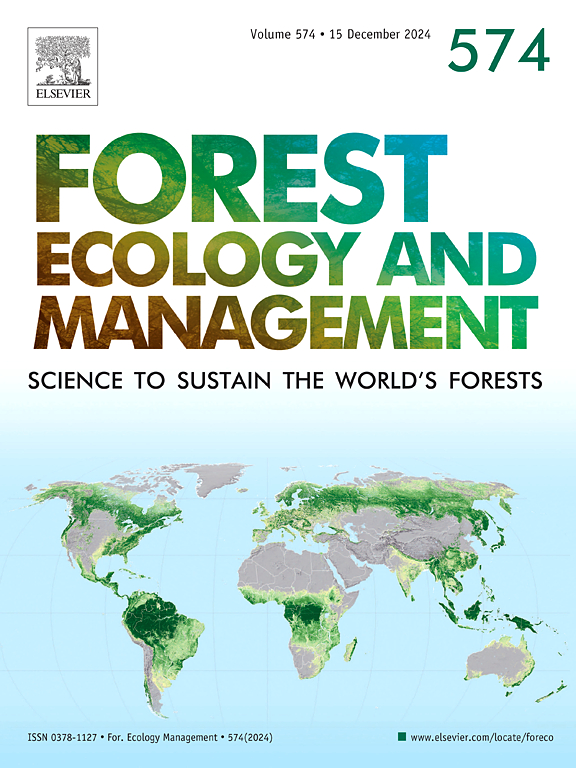Mixed evergreen and deciduous forests boost local climate resilience, nutrient dynamics, and photosynthetic performance assessed by remote sensing
IF 3.7
2区 农林科学
Q1 FORESTRY
引用次数: 0
Abstract
Mixed forests, consisting of tree species from diverse ecological niches, often show increased productivity. Photosynthesis, a crucial process for tree biomass accumulation, can be influenced by species mixing, although direct evidence linking species mixing to enhanced photosynthetic efficiency is limited. One benefit of species mixing is the improvement of local climatic conditions and nutrient supply, but it remains uncertain whether these factors directly enhance photosynthesis. This study uses datasets of solar-induced chlorophyll fluorescence from the Orbiting Carbon Observatory-2 (OCOSIF) and the Global OCO-2 products (GOSIF) as proxies for photosynthetic activity. It investigates the effects of species mixing on stand-level photosynthetic activity in evergreen-deciduous forests on the Loess Plateau. The study also assesses the roles of local climatic variability and nutrient availability. The datasets cover plots with spatial resolutions of 0.02° by 0.01° for OCOSIF and 0.05° by 0.05° for GOSIF, with sample counts of 416 and 369, respectively, spanning from 2014 to 2022. Through generalized additive mixed models and structural equation models, the research reveals that the mixing effects of evergreen and deciduous trees on solar-induced fluorescence follow a multimodal pattern corresponding to the proportion of evergreen trees. Peak effects are influenced by factors such as canopy moisture variability and soil nutrient dynamics, with canopy moisture variability having the most significant impact. In conclusion, the mixing of evergreen and deciduous trees on the Loess Plateau enhances stand-level photosynthetic performance, mainly driven by stability in water supply and nutrient availability.
求助全文
约1分钟内获得全文
求助全文
来源期刊

Forest Ecology and Management
农林科学-林学
CiteScore
7.50
自引率
10.80%
发文量
665
审稿时长
39 days
期刊介绍:
Forest Ecology and Management publishes scientific articles linking forest ecology with forest management, focusing on the application of biological, ecological and social knowledge to the management and conservation of plantations and natural forests. The scope of the journal includes all forest ecosystems of the world.
A peer-review process ensures the quality and international interest of the manuscripts accepted for publication. The journal encourages communication between scientists in disparate fields who share a common interest in ecology and forest management, bridging the gap between research workers and forest managers.
We encourage submission of papers that will have the strongest interest and value to the Journal''s international readership. Some key features of papers with strong interest include:
1. Clear connections between the ecology and management of forests;
2. Novel ideas or approaches to important challenges in forest ecology and management;
3. Studies that address a population of interest beyond the scale of single research sites, Three key points in the design of forest experiments, Forest Ecology and Management 255 (2008) 2022-2023);
4. Review Articles on timely, important topics. Authors are welcome to contact one of the editors to discuss the suitability of a potential review manuscript.
The Journal encourages proposals for special issues examining important areas of forest ecology and management. Potential guest editors should contact any of the Editors to begin discussions about topics, potential papers, and other details.
 求助内容:
求助内容: 应助结果提醒方式:
应助结果提醒方式:


